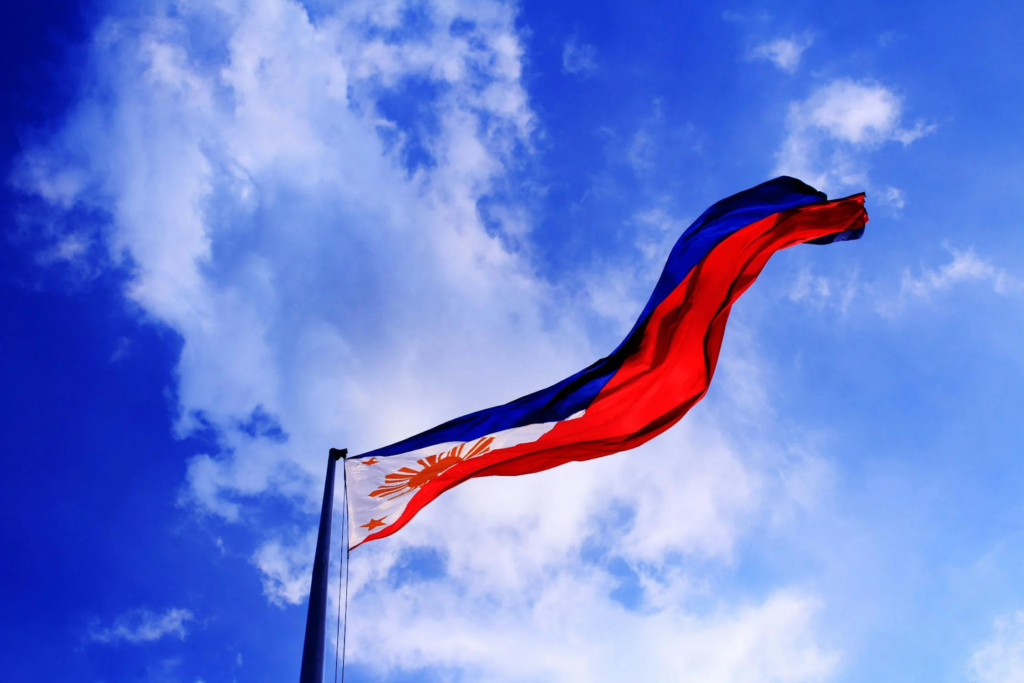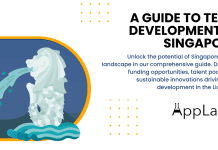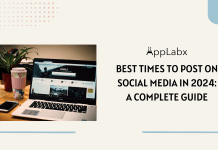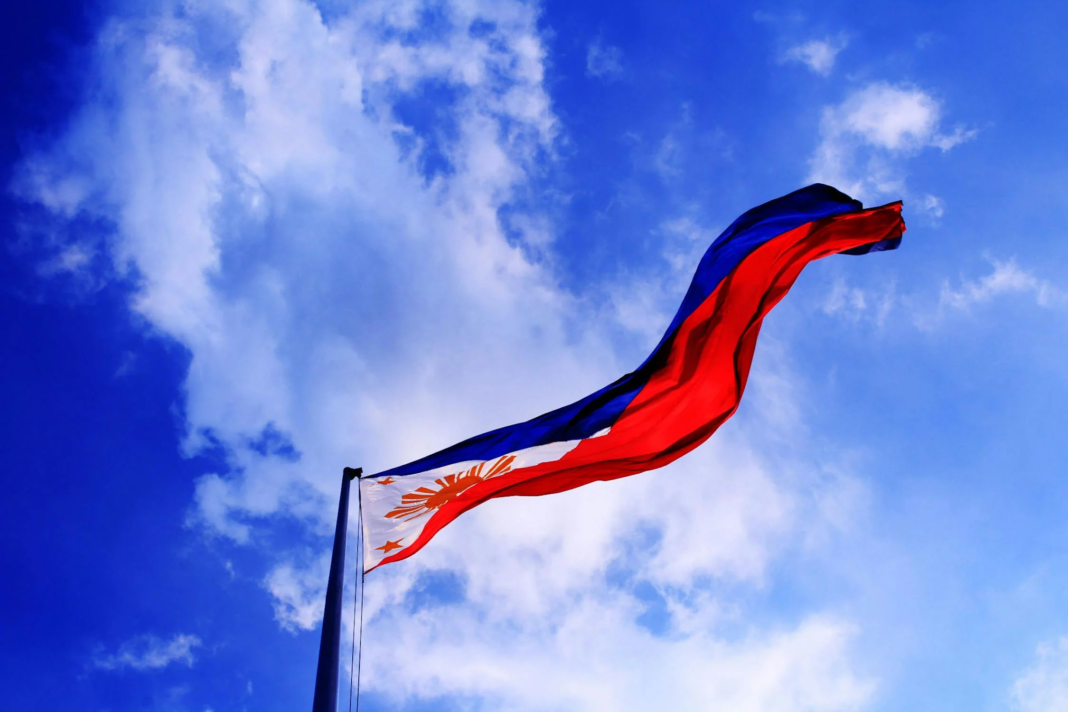Key Takeaways
- Google Dominance & Mobile-First SEO – With Google holding over 90% market share and mobile devices driving 84.5% of web traffic, optimizing for Google’s algorithms and mobile usability is crucial.
- Local & E-commerce SEO Growth – The surge in localized searches and online shopping demands strategic SEO efforts, including Google Business Profile optimization and product page enhancements.
- AI & Emerging Search Trends – The rise of AI-powered search, voice search, and evolving algorithms necessitates high-quality, intent-driven content and adaptive SEO strategies.
The landscape of Search Engine Optimization (SEO) in the Philippines is evolving at an unprecedented pace as we move into 2025.
With rapid technological advancements, shifting search algorithms, and an increasingly digital-savvy population, businesses and marketers must stay ahead of the curve to maintain a competitive edge.
As the Philippines continues to embrace digital transformation, SEO has become more than just a tool for ranking websites—it is now an integral part of a brand’s overall marketing strategy, influencing visibility, credibility, and customer engagement.

The country has witnessed an explosion in internet penetration, mobile usage, and e-commerce activity, making SEO more relevant than ever.
In 2024 alone, the Philippines saw a substantial increase in online searches, fueled by the growing number of businesses shifting to digital platforms.
This trend is expected to continue in 2025, driven by factors such as improved internet infrastructure, the rise of artificial intelligence (AI) in search, and changes in consumer behavior.
But how exactly is SEO shaping up in the Philippines this year? What new challenges and opportunities should businesses prepare for?
To answer these questions, we must delve into key trends, algorithm updates, and the overall digital marketing landscape that define the current state of SEO in the country.
The Growing Importance of SEO in the Philippine Digital Economy
In recent years, the Philippines has seen a surge in digital adoption across industries, making SEO an essential strategy for businesses of all sizes. The increasing reliance on search engines for information, services, and products has made ranking on Google, Bing, and other search platforms a primary goal for many brands. Local businesses, e-commerce platforms, and even government institutions are now leveraging SEO to improve their online presence.
One of the major drivers of this SEO boom is the expansion of the digital economy. The Philippines has one of the fastest-growing e-commerce sectors in Southeast Asia, with platforms like Lazada, Shopee, and Zalora dominating the market. Consumers are more inclined to shop online, conduct research before making a purchase, and rely on search engines to find the best deals. This shift has placed SEO at the center of marketing strategies, as businesses compete to appear at the top of search results.
Furthermore, the digital services industry—comprising IT, outsourcing, and online freelancing—has also contributed to the demand for SEO expertise. The country’s booming Business Process Outsourcing (BPO) sector has recognized SEO as a critical skill, with companies offering specialized services in digital marketing, content creation, and link-building strategies. As a result, SEO professionals in the Philippines have access to a growing number of career opportunities, further strengthening the industry.
Evolving Search Engine Algorithms and Their Impact
Search engine algorithms are constantly changing, and keeping up with these updates is crucial for SEO success. Google, which dominates the search engine market in the Philippines, frequently rolls out algorithm updates that impact website rankings. In 2025, some of the most significant algorithm changes revolve around:
- AI-Driven Search Results: Google’s AI-powered algorithms, such as Google Bard and Search Generative Experience (SGE), are transforming the way search results are displayed. Websites that provide high-quality, authoritative, and relevant content are prioritized.
- E-E-A-T (Experience, Expertise, Authoritativeness, Trustworthiness): Google has intensified its focus on content quality, favoring websites that demonstrate credibility and expertise in their niche. This means businesses must produce well-researched, in-depth, and informative content to rank higher.
- User Experience (UX) Signals: Page speed, mobile-friendliness, and core web vitals continue to be ranking factors. Websites with slow loading times or poor navigation can experience ranking drops, emphasizing the need for technical SEO improvements.
- Voice and Visual Search Optimization: As more Filipinos use voice assistants like Google Assistant and conduct image-based searches, optimizing for these search methods has become crucial. Businesses must integrate natural language processing (NLP) keywords and structured data to stay ahead.
Understanding these changes and adapting SEO strategies accordingly will be essential for businesses looking to thrive in the competitive digital landscape of 2025.
The Role of AI, Automation, and SEO Tools
Artificial intelligence (AI) and automation are revolutionizing SEO practices in the Philippines. Tools powered by AI are now being used for keyword research, content generation, and performance analysis. Some of the most popular AI-driven SEO tools include:
- ChatGPT and AI Writing Assistants: These tools help marketers generate high-quality content efficiently while ensuring relevance to search queries.
- SEO Auditing Software: Platforms like Ahrefs, SEMrush, and Google Search Console allow businesses to track website performance and identify areas for improvement.
- Automated Link-Building Tools: AI-powered outreach and backlink analysis tools are helping businesses acquire high-quality backlinks with minimal manual effort.
The integration of AI in SEO has streamlined workflows and improved efficiency, allowing businesses to scale their digital marketing efforts. However, while AI can assist with SEO, human expertise remains irreplaceable, especially in understanding user intent, crafting engaging content, and making strategic decisions.
Local SEO and Its Rising Significance
Local SEO has become a game-changer for businesses targeting Filipino consumers. With Google My Business (GMB) optimization, local citations, and location-based keywords, businesses can enhance their visibility in local search results. This is particularly beneficial for brick-and-mortar businesses, restaurants, and service providers that rely on foot traffic and local customers.
Key aspects of local SEO that will be crucial in 2025 include:
- Google Business Profile Optimization: Ensuring accurate business information, reviews, and local keywords help businesses rank in “near me” searches.
- Customer Reviews and Ratings: Positive reviews on Google and other platforms boost trust and influence rankings.
- Local Content Marketing: Creating content relevant to specific locations, such as city guides or community news, can improve search rankings for local audiences.
With the rise of hyperlocal searches, businesses that invest in local SEO strategies will gain a competitive advantage.
Conclusion
As the SEO industry in the Philippines moves into 2025, it is clear that businesses must adopt a forward-thinking approach to stay ahead. The increasing digitalization of commerce, evolving search algorithms, and the growing impact of AI are reshaping how SEO is practiced. Whether through technical SEO improvements, content optimization, or leveraging AI-driven tools, businesses that stay updated with these trends will dominate the digital landscape.
The future of SEO in the Philippines is bright, but success will depend on adaptability, innovation, and a commitment to providing value to users. By understanding the latest developments and implementing effective SEO strategies, businesses can position themselves for long-term growth in the ever-changing world of search engine optimization.
The State of SEO in the Philippines for 2025
- Internet Penetration and Digital Adoption in the Philippines: A Strategic SEO Perspective
- Mobile Connectivity and Social Media Engagement in the Philippines: A Crucial Consideration for SEO
- Search Engine Dominance in the Philippines: Market Share and SEO Implications
- The Mobile-First Reality in the Philippines: Device Usage Trends and SEO Implications
- Deciphering User Intent: Keyword Trends and Search Query Behavior in the Philippines (2025)
- Sector-Specific SEO Strategies and Emerging Trends in the Philippines (2025)
- The Interconnection Between E-Commerce Expansion and SEO Optimization in the Philippines (2025)
- Optimizing for Local Audiences: The Evolution of Local SEO in the Philippines (2025)
- Navigating the Evolving SEO Landscape in the Philippines: Challenges and Opportunities (2025)
- Strategic Roadmap for SEO Success in the Philippines (2025)
1. Internet Penetration and Digital Adoption in the Philippines: A Strategic SEO Perspective
The Philippines has entered a phase of extensive digital adoption, with the nation witnessing an impressive surge in internet usage. As of early 2025, an estimated 97.5 million Filipinos are actively engaged online, representing 83.8% of the total population. This marks a net increase of 792,000 users compared to the preceding year, indicating a gradual but steady expansion of the country’s digital landscape. While internet access has reached the vast majority of the population, a remaining 16.2%—equivalent to approximately 18.8 million individuals—remains offline. This segment presents an untapped opportunity for future digital inclusion initiatives, yet it also highlights the current limitations of SEO strategies in penetrating this offline demographic.
The rapid increase in internet adoption over recent years reflects the Philippines’ ongoing digital transformation. Notably, in 2023, internet penetration stood at 75%, signifying that within just two years, the country has made substantial progress in bridging the digital divide. This 8.8% increase in internet adoption between 2023 and 2025 exemplifies the accelerated pace of digital expansion, driven by factors such as improved telecommunications infrastructure, government initiatives, and the affordability of mobile internet access.
Digital Consumption and Its Implications for SEO
Filipinos are among the most digitally engaged populations globally, with individuals spending an average of 8 hours and 52 minutes online daily. This figure far exceeds the global average, emphasizing the internet’s integral role in the daily routines of Filipino consumers. This extensive screen time offers businesses unparalleled opportunities to establish a strong digital presence through SEO-driven strategies, content marketing, and online engagement tactics. Given the extended user activity across various hours of the day, brands must optimize their digital outreach to capitalize on this sustained engagement, tailoring content delivery to peak browsing periods.
A striking 5 hours and 21 minutes of this daily digital activity is dedicated to mobile browsing, further reinforcing the dominance of mobile internet consumption in the Philippines. This surpasses the global average by a significant margin, signaling a pressing need for businesses to adopt a mobile-first SEO approach. Websites must be fully optimized for mobile-friendliness, fast loading speeds, responsive design, and seamless user experience to maintain high rankings in search engine results pages (SERPs). Moreover, with mobile searches now influencing a considerable portion of consumer purchasing decisions, local SEO, voice search optimization, and structured data implementation have become indispensable for brands aiming to secure a competitive advantage.
The Philippines as a Global Leader in Internet Usage
The Digital 2025 Report positions the Philippines as the world’s leading country in terms of average daily internet usage. This unparalleled level of digital engagement solidifies the country’s status as a prime market for businesses seeking to leverage SEO, content marketing, and data-driven digital strategies. However, this heightened competition also means that achieving online visibility requires a more sophisticated, adaptive, and consumer-centric SEO approach.
Businesses targeting Filipino consumers must not only focus on ranking high in search engine results but also ensure content relevance, user experience optimization, and omnichannel marketing integration. The intense level of online activity signifies that brands failing to adopt modern SEO methodologies risk being overshadowed by more digitally agile competitors.
The continuous evolution of the Philippine digital ecosystem presents both opportunities and challenges. On one hand, the growing internet penetration and mobile-first behavior create an expansive market for digital businesses. On the other hand, SEO practitioners must constantly refine their strategies in response to Google’s evolving algorithms, shifting user behaviors, and rising competition.
In 2025, SEO in the Philippines is no longer just about optimizing for keywords—it is about delivering a seamless, engaging, and localized digital experience. As digital consumption patterns continue to evolve, brands that prioritize a holistic, data-driven SEO strategy will be best positioned to thrive in this highly engaged online marketplace.
2. Mobile Connectivity and Social Media Engagement in the Philippines: A Crucial Consideration for SEO
The widespread adoption of mobile technology in the Philippines underscores the nation’s deepening digital integration. As of early 2025, there are an estimated 142 million active cellular mobile connections, an extraordinary figure that equates to 122% of the total population. This statistic indicates that a significant portion of Filipinos maintain multiple mobile subscriptions or operate more than one mobile device, reinforcing the critical role of mobile connectivity in daily life.
A striking 98.2% of these mobile connections fall under the broadband category, signifying the extensive availability of high-speed internet through mobile networks. This robust mobile infrastructure facilitates seamless access to digital content, enabling businesses to implement mobile-first SEO strategies that cater to the nation’s highly mobile-centric audience. Websites and online platforms that fail to prioritize responsive design, accelerated mobile pages (AMP), and optimized mobile experiences risk alienating a significant segment of their potential audience, ultimately diminishing their search engine rankings.
With mobile internet serving as the primary gateway to online experiences, businesses must refine their local SEO tactics, ensuring accurate and up-to-date Google Business Profile listings, voice search optimization, and location-based keyword targeting. The heavy reliance on mobile browsing also highlights the importance of page speed optimization, as slow-loading sites risk increased bounce rates and decreased conversions.
The Dominance of Social Media in Digital Engagement
Beyond mobile connectivity, social media continues to exert a profound influence on Filipino digital behavior. As of January 2025, the number of social media user identities in the Philippines reached 90.8 million, representing 78% of the total population. This figure reflects the widespread penetration of social platforms, positioning them as indispensable channels for digital marketing, brand visibility, and consumer engagement.
Filipino users demonstrate a high level of social media consumption, dedicating an average of 3 hours and 22 minutes per day to social networking activities. This places the Philippines fourth globally in terms of daily social media usage, highlighting the necessity for businesses to integrate SEO with social media strategies to maximize brand exposure and audience reach.
Moreover, Filipino users exhibit a broad digital footprint across multiple platforms, with individuals engaging with an average of 8.36 social media networks each month—a statistic that ranks the country second globally in multi-platform usage. This trend emphasizes the need for brands to diversify their content strategy, ensuring presence and engagement across multiple social channels, from Facebook and Instagram to TikTok, X (formerly Twitter), and LinkedIn.
The Influence of Social Media on Consumer Behavior and SEO
The evolving dynamics of social media usage in the Philippines have profound implications for SEO and digital marketing strategies. With 44.9% of Filipinos aged 16 and above following influencers, influencer marketing has become a powerful tool for brand amplification, trust-building, and consumer decision-making. Companies that leverage collaborations with relevant industry influencers can significantly enhance their content reach, backlink potential, and overall domain authority, which in turn improves their organic search rankings.
Additionally, 97.6% of Filipinos engage with online video content on a weekly basis, underscoring the growing dominance of video-based digital consumption. Platforms such as YouTube, TikTok, and Facebook Watch serve as primary content discovery engines, necessitating the integration of video SEO tactics such as optimized video titles, keyword-rich descriptions, and schema markup to improve visibility in both search engines and social algorithms.
The continued growth of social media usage in the Philippines, evidenced by a 4.6% increase in social media identities between early 2024 and early 2025, reflects an expanding audience for social-driven SEO and content marketing initiatives. Businesses that effectively align their SEO strategies with social media engagement trends will be better positioned to capitalize on evolving digital behaviors, enhance brand discoverability, and drive sustained organic traffic from diverse online sources.
3. Search Engine Dominance in the Philippines: Market Share and SEO Implications
The Philippine search engine landscape in 2025 remains overwhelmingly dominated by Google, which commands an unrivaled market share of 91.34% as of February 2025. This dominance cements Google as the primary search engine for businesses looking to achieve digital visibility in the country. Competing search engines, such as Bing (5.64%) and Yahoo! (2.54%), hold only a fraction of the market, while alternative platforms like DuckDuckGo, Ecosia, and Yandex collectively account for less than 1%.
This near-complete monopoly underscores the necessity for companies and digital marketers operating in the Philippines to prioritize Google-centric SEO strategies. Ranking high on Google’s search results remains the most effective avenue for driving organic traffic, increasing brand awareness, and improving online conversions. Given the search engine’s evolving algorithm updates, ranking factors, and user experience considerations, businesses must adopt a comprehensive and adaptable SEO strategy that aligns with Google’s best practices.
Limited Market Share of Alternative Search Engines
Although alternative search engines are available, their adoption in the Philippines remains marginal. Bing, Yahoo!, and other lesser-known platforms collectively account for less than 10% of search queries, rendering dedicated optimization efforts for these platforms less impactful for most businesses. However, industries catering to specific user demographics—such as corporate professionals or older internet users—may benefit from limited efforts on Bing and Yahoo!, particularly for paid search strategies.
A comparative Asia-Pacific market share analysis as of February 2025 reveals that Google holds a similarly dominant position across the region, exceeding 90% market share. While Bing and Yahoo! register minor variations in adoption rates—Bing at 2.74% and Yahoo! at 1.66%—the overarching trend remains consistent: Google is the primary search engine across both national and regional digital ecosystems. These findings further reinforce the strategic necessity of Google optimization for businesses seeking to expand their reach within the Philippine market and beyond.
Search Engine Traffic and User Behavior Trends
An examination of the most visited websites in the Philippines as of February 2025 provides further insights into search engine usage patterns. Google.com remains the most-visited website in the country, boasting an impressive 1.55 billion visits during the period. Notably, 66.23% of these visits originated from mobile devices, highlighting the importance of mobile-first SEO strategies.
Bing.com, despite its smaller market share, still recorded 64.23 million visits, with a higher mobile traffic share of 76.9%. This suggests that Bing’s user base in the Philippines may be composed of mobile-oriented searchers, possibly driven by Microsoft-integrated search functions on smartphones and tablets.
Yahoo.com, on the other hand, logged 29.72 million visits, with a striking 83.36% of traffic originating from desktop devices. This desktop-heavy usage pattern may indicate that Yahoo! serves a niche audience—potentially older users or professionals—who rely on Yahoo’s ecosystem of services, such as email, news, and finance, rather than its search functionality.
SEO Strategies for the Philippine Search Market in 2025
With Google maintaining an uncontested leadership position, businesses and digital marketers must implement Google-first SEO strategies to maximize their online reach. Key priorities include:
- Mobile Optimization: Given Google’s mobile-first indexing and the dominance of mobile searches, businesses must ensure fast-loading, responsive, and user-friendly websites to maintain high rankings.
- Content Quality and Relevance: Google’s algorithms prioritize authoritative, relevant, and well-structured content, making high-quality blogs, videos, and interactive media essential for SEO success.
- Technical SEO Excellence: A strong site architecture, proper indexing, schema markup, and internal linking help improve visibility in Google’s SERPs (Search Engine Results Pages).
- Local SEO and Google Business Profile Optimization: With mobile and location-based searches becoming increasingly prevalent, businesses must ensure their Google Business Profile (GBP) listings are accurate and optimized.
- E-E-A-T Compliance: Google’s Experience, Expertise, Authoritativeness, and Trustworthiness (E-E-A-T) guidelines continue to shape search rankings, making credibility and expertise key factors in SEO performance.
While Bing and Yahoo! may still contribute marginal traffic, they do not warrant extensive SEO investments in the Philippine market. However, businesses targeting specific demographics or industries with known Bing or Yahoo! user bases can explore limited SEO and PPC (pay-per-click) campaigns to capitalize on their niche audiences.
The Philippine search engine landscape in 2025 remains firmly in Google’s grasp, reinforcing the necessity for adaptive, data-driven SEO strategies that align with Google’s evolving algorithms and ranking methodologies. Businesses that continuously refine their SEO approaches, enhance their content strategies, and optimize for mobile usability will be best positioned to secure long-term digital success in an increasingly competitive online marketplace.
4. The Mobile-First Reality in the Philippines: Device Usage Trends and SEO Implications
By 2025, the Philippine digital landscape has firmly established itself as mobile-first, with the majority of web activity occurring on handheld devices. As of February 2025, mobile devices account for an overwhelming 84.5% of the total platform market share for web access, while desktop usage lags behind at just 15.5%. This significant disparity underscores the growing reliance on smartphones and tablets for online interactions, from browsing and shopping to consuming content and accessing services.
For businesses and digital marketers, this mobile-centric trend signals an imperative shift toward mobile-first SEO strategies. Websites that fail to offer a seamless, fast, and user-friendly mobile experience risk alienating a vast majority of potential consumers. Factors such as mobile responsiveness, page speed optimization, and intuitive navigation have become critical in ensuring high search engine rankings, lower bounce rates, and increased engagement.
Expanding Mobile Infrastructure and Rising Internet Speeds
The widespread adoption of mobile connectivity in the Philippines is further reinforced by a well-established mobile infrastructure. As of early 2025:
- The country boasts 142 million active cellular mobile connections, translating to 122% of the total population, indicating that many individuals own multiple mobile subscriptions or devices.
- A substantial 98.2% of these connections are classified as broadband, ensuring widespread access to high-speed mobile internet.
- Mobile internet performance has also seen notable improvements, with the median mobile download speed reaching 35.56 Mbps in January 2025, reflecting a 28.1% increase compared to the previous year.
These advancements suggest that Filipino mobile users are now better equipped to engage with rich media content, high-definition video streaming, and data-heavy applications—elements that were previously hindered by slower connectivity. As mobile speeds continue to improve, businesses must optimize multimedia content, compress images, and implement AMP (Accelerated Mobile Pages) to ensure smooth performance across mobile networks.
Time Spent Online: The Role of Mobile in Digital Consumption
Filipinos are among the most engaged digital consumers in the world, and their preference for mobile devices is further reflected in their daily online activity patterns. Out of the 8 hours and 52 minutes spent on the internet each day, an average of 5 hours and 21 minutes is spent on mobile phones. This extended mobile screen time highlights the importance of capturing user attention through mobile-friendly content, whether through search engine results, social media, or mobile applications.
Although some studies suggest that over 70% of Philippine web traffic originates from mobile devices, slightly lower than the 84.5% reported by StatCounter, the overarching trend remains clear: mobile devices dominate internet usage in the country. Comparatively, the global share of mobile-driven web traffic stood at 58.7% in 2024, with projections indicating a rise to 60.9% by 2025. This stark contrast emphasizes that mobile-first optimization is even more critical in the Philippines than in many other markets worldwide.
SEO Strategies for a Mobile-First Philippines
Given the undeniable dominance of mobile usage, businesses targeting the Philippine digital audience must ensure that their SEO and digital marketing strategies align with mobile-first best practices. Key areas of focus include:
- Mobile-Responsive Design: Websites must seamlessly adapt to various screen sizes, ensuring optimal user experiences across smartphones, tablets, and different mobile browsers.
- Page Speed Optimization: Slow-loading pages can deter users and lower search rankings, making techniques such as image compression, lazy loading, and caching essential for performance improvement.
- Core Web Vitals Compliance: Google prioritizes user experience metrics such as loading speed, interactivity, and visual stability, making it imperative to enhance mobile usability scores.
- Voice Search Optimization: With the rising adoption of voice-activated assistants, businesses must target conversational keywords, long-tail queries, and structured data markup to improve voice search visibility.
- Local SEO Enhancements: Given the prevalence of mobile searches for nearby services, optimizing for Google Business Profile listings, location-based keywords, and mobile-friendly maps integration is crucial for attracting local customers.
As the Philippine digital ecosystem continues its trajectory toward mobile-first dominance, businesses that fail to adapt risk losing visibility, engagement, and potential conversions. By prioritizing mobile-optimized SEO strategies, brands can effectively capture the attention of the highly active mobile user base and secure a competitive edge in the evolving digital marketplace.
5. Deciphering User Intent: Keyword Trends and Search Query Behavior in the Philippines (2025)
Understanding the search query landscape is fundamental to crafting an effective SEO strategy in the Philippines. Although comprehensive lists of the most searched keywords in 2025 remain proprietary, available data and trend reports provide invaluable insights into Filipino user behavior. Search patterns indicate a strong interest in digital entertainment, artificial intelligence, e-commerce, and localized services, reflecting the evolving priorities of internet users.
For SEO professionals and digital marketers, adapting to these shifting search behaviors means aligning content strategies with real-time trends, emerging technologies, and user preferences. Recognizing the significance of both informational and transactional search intent is crucial for maximizing visibility and engagement in search engine results pages (SERPs).
Dominant Search Queries and High-Volume Keywords
Recent data reveals that entertainment, social media, and AI-related queries dominate search activity in the Philippines. Among the top-searched terms, platforms such as Pornhub (45.5 million monthly searches), YouTube (30.4 million), Facebook (20.4 million), and ChatGPT (24.9 million) consistently rank at the top. These figures reflect the continued reliance on online entertainment, digital communication, and AI-powered tools among Filipino users.
Additionally, Google’s Year in Search 2024 for the Philippines highlights the role of real-world events and trending topics in shaping search demand. Key searches included:
- Weather and Environmental Concerns – The impact of a major heatwave drove substantial searches for climate-related information.
- Celebrity News and Pop Culture – The passing of a high-profile actress garnered nationwide attention.
- Sports and Global Events – Searches for the Olympics, NBA, and Filipino gymnast Carlos Yulo indicate strong engagement with the sports industry.
- Artificial Intelligence and Tech – Queries such as “AI detector,” “Gemini,” and “ChatGPT” underscore the growing interest in AI applications and innovations.
These trends emphasize the need for real-time content adaptation in SEO strategies. Businesses and content creators must remain agile, integrating high-interest topics into their digital content to capture organic search traffic.
Local Search Optimization: The Rise of Geo-Specific Queries
The increasing use of location-based searches underscores the importance of local SEO in the Philippines. Common geo-targeted queries, such as:
- “Restaurants near me”
- “Best salons in Cebu”
- “Top digital marketing agencies in Manila”
…reflect the growing demand for hyper-localized search results. Google’s continued emphasis on local search ranking factors (such as Google Business Profile optimization, NAP consistency, and user-generated reviews) reinforces the necessity of a localized SEO approach for businesses aiming to reach regional markets.
Additionally, the rise of mobile-first searches and voice search adoption has influenced the structure of search queries. Filipinos increasingly use conversational, long-tail keywords such as:
- “Where can I buy authentic leather bags in Quezon City?”
- “What’s the best affordable facial cleanser for oily skin?”
- “How much is the average salary of a graphic designer in the Philippines?”
Optimizing content for natural language processing (NLP) and featured snippets ensures higher SERP rankings and better alignment with voice search patterns.
Trending Consumer Interests and E-Commerce Search Behavior
Search query data also indicates a rising demand for product-related searches, reflecting consumer interests in health, beauty, and lifestyle categories. Trending e-commerce-related keywords include:
- “Mass gainer” (fitness and nutrition)
- “Makeup blush” (beauty and cosmetics)
- “Facial cleanser” (skincare and personal care)
This high commercial intent suggests that businesses must optimize product listings, integrate structured data (schema markup), and create compelling content to enhance visibility in Google Shopping and organic search results.
The Influence of Social Media on Search Queries
The dominance of short-form video content and hyper-localized trends on social media platforms is also reshaping search behavior. Users often cross-search trending topics from TikTok, Instagram, and Facebook on Google, integrating platform-specific terms or video-related keywords in their searches.
For instance, trending entertainment and gaming searches in early 2025 include:
- TV Series: “Queen of Tears”
- Movies: “Inside Out 2”
- Gaming Trends: “Sprunki Horror Music Game”
As social media algorithms increasingly shape consumer preferences, SEO strategies must incorporate multi-platform optimization to ensure that brands remain visible across both social and search ecosystems.
SEO Strategies for Capitalizing on Search Trends in 2025
To maximize digital reach and search visibility, businesses and content creators in the Philippines must align their SEO efforts with evolving user intent through the following key strategies:
- Real-Time Content Optimization: Regularly update websites and blogs to incorporate trending topics and capitalize on high-interest search terms.
- Voice Search Readiness: Structure content in a conversational, question-based format to rank for voice-assisted searches.
- Local SEO Enhancements: Optimize Google Business Profile, local citations, and customer reviews to rank higher for geo-targeted queries.
- E-Commerce SEO: Implement schema markup for product listings, optimize for Google Shopping, and create buyer-intent blog content to drive conversions.
- Multi-Platform Integration: Leverage insights from social media trends to craft search-friendly, engaging content that aligns with user behavior across different digital channels.
As search behavior in the Philippines continues to evolve, businesses that effectively anticipate and respond to user intent will gain a significant competitive advantage in 2025’s highly dynamic digital landscape.
6. Sector-Specific SEO Strategies and Emerging Trends in the Philippines (2025)
As the digital economy in the Philippines continues to evolve, various industries are experiencing rapid growth, necessitating a strategic and highly targeted SEO approach. Businesses operating in e-commerce, tourism, and finance must optimize their online presence to remain competitive and capitalize on emerging search trends.
E-Commerce SEO: Adapting to a Growing Digital Marketplace
Expanding Market and Digital Consumer Behavior
The e-commerce sector in the Philippines is poised for significant expansion in 2025, with projections indicating a 17% growth rate and over 70 million Filipinos actively shopping online. This sustained growth underscores the critical need for businesses to refine their SEO strategies, ensuring maximum visibility across search engines and digital storefronts.
A key driver of this expansion is the rise of mobile commerce and social shopping, fueled by increasing smartphone penetration and the integration of in-app purchasing features on platforms like Facebook, Instagram, and TikTok. As a result, e-commerce brands must extend their SEO efforts beyond traditional search engines to include social commerce optimization, targeting high-intent consumers through localized and visually appealing content.
Best Practices for E-Commerce SEO in 2025
To succeed in this competitive landscape, businesses must implement advanced SEO techniques tailored to consumer behavior and technological advancements:
- Optimizing for Voice and Visual Search – With a growing number of Filipinos using voice search and image-based queries, businesses must adopt natural language processing (NLP)-driven keywords and implement structured data markup for product images.
- Mobile and Site Speed Optimization – Given the mobile-first reality of the Philippine digital market, ensuring fast-loading pages and responsive design is imperative to prevent cart abandonment and enhance user experience.
- Leveraging AI for Content Strategy – AI-powered tools can automate keyword research, generate dynamic product descriptions, and personalize content for higher engagement and conversion rates.
- Enhancing Product Page Optimization – Integrating localized keywords, detailed product descriptions, high-quality images, customer reviews, and FAQs improves search ranking and conversion rates.
- Focusing on Localized SEO and Personalization – Consumers are increasingly searching for region-specific services (e.g., “best online clothing store in Manila”). Implementing geo-targeted keywords and local schema markup enhances visibility in location-based searches.
With an expected e-commerce conversion rate between 2% and 4%, businesses must continuously refine their SEO efforts to improve user engagement and drive sales. Notably, the Philippines’ e-commerce growth rate (24% in 2024) has outpaced the global average, signaling a sustained upward trend and immense opportunities for digital retailers.
SEO for Tourism: Capturing the Digital Traveler’s Journey
Resurgence of the Philippine Tourism Industry
The tourism industry in the Philippines is experiencing a strong resurgence, surpassing pre-pandemic revenue levels in early 2025. January figures alone recorded over USD 1.1 billion in tourism revenue, marking an astounding 136.1% increase compared to January 2019. Moreover, 1,167,908 foreign travelers visited the country within the first two months of 2025, with South Korea emerging as the top source market.
This rebound signals a massive online audience actively searching for travel-related content, making SEO optimization for tourism businesses crucial in influencing travelers’ booking decisions.
Essential Tourism SEO Strategies for 2025
To effectively attract international and local travelers, businesses in the tourism sector must implement the following SEO best practices:
- Localized and Bilingual SEO – Given the significant number of South Korean tourists, offering content in both English and Korean can enhance search rankings and user experience for this key demographic.
- Geo-Specific Keyword Optimization – Incorporating regional travel queries such as “best resorts in Palawan” or “affordable Boracay tour packages” improves SERP visibility for travel-related searches.
- Rich, Visual, and Mobile-Friendly Content – Optimizing travel blogs, guides, and listings with high-quality images, video tours, and fast-loading pages enhances engagement and ranking potential.
- Leveraging Google My Business and Travel-Specific Directories – Ensuring that hotels, tour agencies, and travel services maintain optimized Google Business Profiles helps improve local search rankings and customer trust.
- User-Generated Content and Reviews – Encouraging customer testimonials, video reviews, and travel blogs increases organic visibility and influences prospective travelers’ decisions.
With Filipino consumers spending significant time online researching domestic travel, SEO-optimized local tourism content plays a vital role in attracting both international and domestic travelers.
Finance Industry SEO: Building Digital Trust and Visibility
Digital Transformation in the Financial Sector
The financial industry in the Philippines is undergoing rapid digitization, with an estimated 91.3% of Filipinos utilizing online banking, investment platforms, or insurance websites monthly. This widespread adoption underscores the necessity for financial institutions to optimize their digital presence through effective SEO strategies.
Given the sensitive nature of financial transactions, establishing trust and credibility is paramount. Search engine algorithms increasingly prioritize E-E-A-T (Experience, Expertise, Authoritativeness, and Trustworthiness) when ranking finance-related content, making high-quality, authoritative content crucial for visibility.
Key SEO Trends in Finance for 2025
To maintain search engine visibility and consumer trust, financial institutions must adopt data-driven SEO techniques:
- E-E-A-T Optimization – Producing fact-checked, expert-driven financial content and obtaining backlinks from authoritative sources improves search rankings and credibility.
- Mobile-First SEO and Website Optimization – With a growing number of Filipinos conducting financial transactions via mobile apps, ensuring fast-loading, responsive web pages is essential for user retention.
- Voice Search Adaptation – More consumers are using voice search for financial queries (e.g., “best credit card for freelancers in the Philippines”). Implementing conversational, long-tail keywords improves visibility for these searches.
- Video SEO for Financial Education – Optimizing explainer videos, webinars, and short financial guides enhances engagement and organic reach on both search engines and video platforms like YouTube.
- Local SEO for Physical Branches – While digital banking is on the rise, many Filipinos still search for “nearest bank branch” or “ATM locations”. Maintaining accurate Google Business Profile listings improves local discoverability.
- AI-Driven Content and Chatbots – Utilizing AI-powered tools for automated customer support, personalized financial advice, and predictive keyword optimization enhances customer engagement and search visibility.
The increasing reliance on digital financial services highlights the pivotal role of SEO in ensuring that financial institutions remain easily discoverable, trustworthy, and accessible to their digitally engaged customers.
Final Thoughts: The Future of SEO Across Key Philippine Industries
As digital adoption accelerates in the Philippines, industry-specific SEO strategies must evolve to align with consumer behavior, technological advancements, and search engine algorithms.
- E-Commerce brands must embrace mobile-first optimization, AI-driven content, and voice search to stay ahead in the highly competitive digital marketplace.
- Tourism businesses must leverage localized SEO, bilingual content, and user-generated reviews to attract both international and domestic travelers.
- Financial institutions must focus on trust-building strategies, mobile-friendly experiences, and voice search optimization to enhance their online presence and customer engagement.
By proactively adapting to these SEO trends, businesses across e-commerce, tourism, and finance can maximize search visibility, drive organic traffic, and capitalize on the Philippines’ expanding digital economy in 2025 and beyond.
7. The Interconnection Between E-Commerce Expansion and SEO Optimization in the Philippines (2025)
The rapid acceleration of e-commerce in the Philippines is fundamentally reshaping the digital landscape, reinforcing the critical role of SEO in ensuring online visibility, customer engagement, and sustained business growth. As businesses increasingly shift towards digital commerce, the competition for prominent placement in search engine results intensifies, making search engine optimization a pivotal factor for success.
E-Commerce Growth as a Catalyst for SEO Adoption
The Expanding Digital Marketplace
The Philippine e-commerce sector is experiencing unprecedented growth, driven by a combination of rising digital adoption, an expanding consumer base, and advancements in online payment systems. With millions of Filipinos actively shopping online, businesses must leverage strategic SEO practices to differentiate themselves and secure a competitive edge in an increasingly saturated market.
Several factors contribute to the strong momentum of e-commerce in 2025:
- A Digitally Savvy Consumer Base – With a tech-oriented population and high social media engagement, Filipinos are increasingly comfortable with online transactions, creating a fertile ground for digital retail expansion.
- The Rise of Online Payment Systems – Widespread adoption of e-wallets, digital banking, and cashless transactions enhances consumer trust and convenience, leading to higher e-commerce participation.
- Cost-Effective Business Models – The low overhead costs associated with online stores make e-commerce an attractive option for entrepreneurs, resulting in a surge of digital-first businesses.
- Improving Digital Infrastructure – The continuous enhancement of mobile internet connectivity and broadband accessibility allows for seamless shopping experiences, fostering higher consumer engagement.
- Social Media as a Sales Driver – Platforms such as Facebook, Instagram, and TikTok have transformed into e-commerce hubs, enabling brands to leverage social commerce alongside traditional search-based discovery.
As these market dynamics evolve, SEO has become an indispensable tool for businesses seeking to capture consumer attention and convert online searches into tangible sales.
The Impact of SEO on E-Commerce Success
Search Optimization as a Competitive Advantage
With thousands of online stores vying for consumer attention, an effective SEO strategy is no longer optional—it is a fundamental requirement for sustainable growth. Businesses that fail to optimize for search engines risk losing visibility, traffic, and ultimately, revenue.
Key SEO strategies that are shaping e-commerce success in the Philippines include:
- Product Schema Markup Implementation – Structured data enhances search engine understanding of product listings, improving the visibility of prices, availability, and customer ratings in search results.
- Customer Review Integration – Positive reviews serve as trust signals, influencing search rankings and consumer purchasing decisions, making review management an integral part of SEO.
- Mobile-First Optimization – With over 84% of web traffic in the Philippines originating from mobile devices, ensuring fast, mobile-responsive e-commerce platforms is imperative for search rankings and user retention.
- Voice and Visual Search Adaptation – As more Filipinos use voice assistants and image-based searches, optimizing for natural language queries and high-quality product visuals increases discoverability.
- Localized SEO for Regional Targeting – Incorporating geo-specific keywords and creating content tailored to local audiences enhances visibility in city-based or province-specific searches.
- AI-Driven Personalization and Predictive Search Optimization – The use of artificial intelligence in SEO allows businesses to deliver personalized product recommendations, optimizing content for user intent-based queries.
SEO as the Foundation of E-Commerce Longevity
A well-executed SEO strategy not only boosts immediate visibility but also builds long-term credibility and customer loyalty. Businesses that invest in continuous search optimization are more likely to experience sustainable growth and higher conversion rates in the evolving digital marketplace.
Conclusion: The Future of SEO-Driven E-Commerce in the Philippines
The interdependence between e-commerce growth and SEO is more pronounced than ever in the 2025 Philippine digital economy. As online shopping becomes a dominant force, businesses must prioritize strategic SEO implementation to navigate market saturation, algorithmic changes, and shifting consumer behaviors. By staying ahead of SEO trends and adopting data-driven optimization techniques, e-commerce businesses can maximize their reach, improve user experience, and drive long-term profitability in the rapidly expanding Philippine online marketplace.
8. Optimizing for Local Audiences: The Evolution of Local SEO in the Philippines (2025)
As digital engagement in the Philippines continues to surge, local SEO has become an essential strategy for businesses seeking to connect with customers in specific geographic regions. The increasing reliance on location-based searches, coupled with the growing sophistication of search algorithms, underscores the importance of hyper-localized optimization in driving foot traffic, online visibility, and conversions.
The Expanding Role of Local SEO in the Philippine Market
Why Local SEO is Essential for Businesses in 2025
The rapid urbanization and digitalization of the Philippine market have amplified the need for businesses to fine-tune their local search strategies. Several key factors contribute to the rising significance of local SEO:
- The Prevalence of “Near Me” Searches – Filipino users are increasingly conducting hyper-localized searches for businesses, services, and products in their immediate vicinity. Queries like “best coffee shop near me” or “top salons in Makati” continue to rise, making local search optimization a necessity.
- Growing Dependence on Google Business Profiles (GBP) – Consumers rely heavily on Google Business Profile listings to find store hours, directions, contact details, and customer reviews, emphasizing the need for businesses to maintain an accurate and optimized profile.
- Mobile-Driven Local Searches – With over 84% of web traffic in the Philippines originating from mobile devices, local searches are frequently conducted on smartphones, reinforcing the importance of mobile-friendly local SEO strategies.
- Increased Competition for Local Keywords – Businesses across various industries, including retail, hospitality, and healthcare, are aggressively targeting local search terms, necessitating more advanced and data-driven local SEO tactics.
As businesses recognize the potential of geographically targeted search visibility, local SEO has become an indispensable pillar in their digital marketing strategies.
Key Strategies for Local SEO Success in 2025
1. Optimizing Google Business Profile for Maximum Visibility
A well-optimized Google Business Profile (GBP) is one of the most powerful tools for local search rankings. Best practices include:
- Ensuring accurate and up-to-date business information, including address, contact number, and operating hours.
- Adding high-quality images to showcase products, storefronts, or services, improving engagement.
- Actively managing customer reviews and responses to build trust and credibility.
- Posting regular updates, promotions, and announcements to maintain relevance in search results.
2. Targeting Location-Specific Keywords for Higher Rankings
Strategic keyword usage plays a pivotal role in local SEO success. Businesses must:
- Incorporate city-specific and district-based keywords (e.g., “best restaurants in Cebu City” or “budget hotels in BGC”) in content, meta tags, and URLs.
- Use long-tail keywords that reflect search intent, such as “affordable dental clinics in Manila” or “24/7 convenience stores in Quezon City”.
- Leverage conversational keywords in response to the increasing adoption of voice search, where users phrase queries more naturally.
3. Creating Dedicated Local Landing Pages for Multi-Location Businesses
For businesses with multiple branches, developing individual location pages enhances search engine relevance. These pages should:
- Feature unique, high-quality content tailored to the specific location’s audience.
- Include customer testimonials and localized case studies to establish trust.
- Highlight location-specific promotions, events, or special offers to attract local customers.
4. Strengthening Local Citations and Directory Listings
Local citations—mentions of a business’s name, address, and phone number (NAP) on external websites—contribute significantly to local search rankings. Best practices involve:
- Listing the business on relevant online directories, such as Google Maps, Yelp, and Philippine-based review platforms.
- Ensuring NAP consistency across all citations to avoid discrepancies that could harm search rankings.
- Gaining backlinks from authoritative local websites, blogs, and news outlets to improve domain authority.
5. Implementing Local Business Schema Markup for Enhanced Search Visibility
Structured data markup allows search engines to better understand and display business information. By integrating LocalBusiness Schema markup, businesses can:
- Improve their chances of appearing in rich results, such as featured snippets.
- Provide search engines with detailed business data, including operating hours, service areas, and customer ratings.
- Enhance voice search optimization, as structured data improves the accuracy of voice assistant responses.
Investment in Local SEO Technology and Tools
The Rise of Local SEO Software Adoption
The increasing demand for highly targeted local search strategies has led to a significant uptick in investments in local SEO tools and automation software. Businesses are utilizing:
- AI-driven local SEO platforms to automate keyword tracking and competitive analysis.
- Reputation management tools to monitor customer feedback and respond to reviews in real time.
- Geolocation-based analytics to understand consumer search patterns and engagement trends.
The Competitive Landscape of Local SEO in 2025
As more businesses recognize the immense potential of localized search visibility, the competition for top positions in Google’s local pack continues to intensify. To stay ahead, businesses must:
- Go beyond basic local SEO tactics and implement comprehensive, data-backed strategies.
- Stay updated with Google’s evolving local search algorithms to maintain consistent rankings.
- Prioritize hyper-local engagement, such as collaborations with local influencers and community-driven marketing efforts.
Conclusion: The Future of Local SEO in the Philippines
The growing reliance on location-based search queries in the Philippines cements local SEO as an essential component of digital marketing. As competition within geographic search results intensifies, businesses must adopt advanced local SEO techniques, leverage automation, and stay attuned to evolving consumer search behaviors. By investing in localized content, structured data, and mobile-first optimization, businesses can maximize their presence in the local search ecosystem and connect with their target audiences more effectively than ever before.
9. Navigating the Evolving SEO Landscape in the Philippines: Challenges and Opportunities (2025)
As digital adoption continues to accelerate in the Philippines, search engine optimization (SEO) has become an indispensable strategy for businesses aiming to increase their online presence. However, the evolving technological landscape, shifting user behaviors, and intensifying competition present both significant challenges and promising opportunities for SEO professionals and businesses alike.
Key Challenges in Philippine SEO (2025)
1. Bridging the Digital Divide: Internet Accessibility Issues
While urban centers such as Metro Manila, Cebu, and Davao benefit from high-speed internet connectivity, rural and provincial areas still struggle with slow internet speeds and inconsistent service quality. This disparity creates unique SEO challenges:
- User behavior is influenced by bandwidth limitations, requiring businesses to optimize websites for low-data consumption to ensure accessibility.
- Slow-loading pages discourage engagement, making technical SEO enhancements such as image compression, AMP (Accelerated Mobile Pages), and CDN (Content Delivery Network) integration essential.
- Localized digital strategies must cater to varying internet capabilities across different regions.
2. Intensifying Local SEO Competition
The growing awareness of local SEO advantages has led to a surge in businesses vying for top positions in search results. Increased competition means:
- Basic optimization is no longer enough—businesses must employ advanced local SEO strategies, such as hyper-localized content, structured data, and enhanced Google Business Profile management.
- Ranking for local keywords is becoming more difficult, necessitating a stronger focus on personalized user experiences, engagement metrics, and high-authority backlinks.
- Continuous adaptation to evolving search trends, including voice search and AI-driven local queries, is required for maintaining visibility.
3. Navigating Search Engine Algorithm Updates
Search engines, particularly Google, regularly update their algorithms to improve search relevance and user experience. These frequent changes present challenges such as:
- The unpredictability of ranking fluctuations, requiring businesses to constantly monitor performance metrics and adjust strategies accordingly.
- The increasing emphasis on user experience signals, such as Core Web Vitals, dwell time, and click-through rates, demanding a greater focus on website performance and content engagement.
- Stricter content quality requirements, necessitating adherence to E-E-A-T (Experience, Expertise, Authoritativeness, and Trustworthiness) principles for better rankings.
4. Addressing Language Barriers and Multilingual SEO Complexities
With over 175 languages and dialects spoken across the Philippines, creating linguistically inclusive content remains a significant challenge. Businesses aiming to expand their reach must:
- Develop multilingual content strategies, ensuring that information is accessible in English, Filipino, and other widely spoken regional languages.
- Optimize for language-based search queries, as users often search in Tagalog, Cebuano, Ilocano, and other dialects when looking for local businesses.
- Leverage AI-powered translation tools with human oversight, ensuring linguistic accuracy and cultural relevance.
5. Adapting to AI-Powered Search Experiences
The rise of AI-driven search algorithms, generative AI chatbots, and zero-click searches presents new challenges for SEO practitioners:
- AI-generated search results prioritize high-authority, directly informative content, making content structure and quality more critical than ever.
- AI-driven recommendations in Google Search and Bing alter click-through patterns, requiring businesses to optimize for featured snippets and rich search results.
- Traditional keyword-based SEO must evolve, shifting towards topical authority, semantic search optimization, and contextual relevance.
Opportunities for SEO Growth in the Philippines (2025)
1. Expansion of Digital Markets in Provincial Cities
As internet access improves across provincial regions, new opportunities emerge for businesses to target underserved digital audiences. This shift presents:
- Untapped potential for businesses to dominate regional search queries, as competition remains lower in emerging provincial markets.
- Increased adoption of e-commerce and digital services outside Metro Manila, requiring businesses to optimize for localized search terms and geo-specific content.
- Rising demand for region-specific digital marketing strategies, leading to a higher need for localized SEO expertise.
2. Integration of Social Media and SEO Strategies
Social media plays a crucial role in online engagement among Filipinos, with platforms such as Facebook, TikTok, and YouTube driving massive user activity. The intersection of social media and SEO presents new growth avenues:
- Social signals indirectly impact search rankings, making brand visibility on social platforms a crucial SEO factor.
- Video content optimization for search engines, particularly YouTube SEO, is becoming increasingly valuable.
- User-generated content and social proof (e.g., customer reviews, influencer collaborations) enhance brand trustworthiness and search relevance.
3. The Booming E-Commerce Sector and Niche SEO Specialization
The continued growth of the e-commerce industry in the Philippines creates a high demand for SEO professionals specializing in online retail optimization. Key opportunities include:
- Product schema markup and structured data implementation, improving visibility in search results.
- Conversion rate optimization (CRO) for e-commerce websites, enhancing user experience and purchase intent.
- SEO strategies tailored for social commerce, integrating platforms like Facebook Marketplace, Instagram Shopping, and TikTok Shop.
4. Seasonal and Event-Based SEO Strategies
The Philippines hosts numerous regional festivals, cultural events, and seasonal shopping trends, providing businesses with unique SEO opportunities:
- Optimizing for event-specific searches, such as “Sinulog Festival travel packages” or “Christmas sale discounts in Manila”.
- Creating seasonal content hubs that attract traffic during high-demand periods.
- Leveraging Google Trends and predictive analytics to identify emerging search patterns related to upcoming events.
SEO Investments and Return on Investment (ROI) in the Philippines (2025)
1. SEO Cost Ranges and Market Variability
The cost of SEO services in the Philippines varies widely, depending on business size, industry competition, and service scope:
- Small businesses and startups may invest ₱50,000 to ₱150,000 per month for basic SEO services.
- Medium-sized enterprises and competitive niches require budgets of ₱150,000 to ₱350,000 per month for comprehensive SEO strategies.
- Large corporations and high-competition industries often allocate ₱500,000 or more per month for advanced SEO campaigns and enterprise-level strategies.
2. Long-Term SEO ROI and Performance Expectations
SEO is a long-term investment that yields progressive results over time. Businesses can expect:
- Initial improvements within 3 to 6 months, with notable traffic increases.
- Significant ROI within 6 to 12 months, with measurable ranking improvements and lead generation growth.
- Peak SEO performance typically occurring in the second or third year, delivering compounded returns on investment.
3. Global SEO ROI Trends and Philippine Market Alignment
Globally, 59% of marketers report increased ROI from SEO initiatives, reinforcing its effectiveness as a digital marketing channel. Businesses in the Philippines are:
- Aligning with international best practices to enhance long-term SEO success.
- Recognizing that SEO costs scale with business size, similar to global trends.
- Prioritizing organic growth strategies over short-term paid advertising to sustain brand visibility and customer acquisition.
Final Thoughts: Embracing SEO as a Competitive Advantage
The Philippine SEO landscape in 2025 is both challenging and filled with immense potential. Businesses that invest in long-term SEO strategies, adapt to evolving digital trends, and leverage regional opportunities will secure a strong online presence and sustainable growth. While challenges such as algorithm updates, AI-driven search, and rising competition persist, businesses that stay ahead of these trends through continuous optimization, localized strategies, and data-driven insights will thrive in the ever-evolving digital ecosystem.
10. Strategic Roadmap for SEO Success in the Philippines (2025)
The digital ecosystem in the Philippines continues to evolve rapidly, shaped by high internet penetration, widespread mobile usage, and the increasing dominance of Google in search queries. The e-commerce sector is undergoing exponential growth, while local SEO strategies are becoming indispensable for businesses aiming to capture regional markets. However, alongside these opportunities, businesses must navigate challenges such as uneven internet speeds across rural and urban areas, rapidly advancing search technologies, and the rising complexity of search engine algorithms.
To stay competitive in this dynamic landscape, both businesses and SEO professionals must adopt proactive, data-driven, and adaptable strategies that align with the latest trends and user behaviors.
Strategic Recommendations for Businesses in the Philippines (2025)
1. Prioritize Mobile-First Website Design
With a majority of Filipino internet users accessing websites via mobile devices, businesses must ensure that their online platforms are:
- Fully responsive and optimized for seamless mobile experiences.
- Enhanced for site speed and quick load times, reducing bounce rates.
- Structured with intuitive navigation, making it easy for users to find information or complete purchases.
2. Focus SEO Efforts on Google’s Search Algorithms
Since Google dominates the search market in the Philippines, businesses should:
- Align content with Google’s latest ranking signals, including Core Web Vitals and E-E-A-T (Experience, Expertise, Authoritativeness, Trustworthiness).
- Leverage Google Search features such as Featured Snippets, People Also Ask (PAA), and Knowledge Panels to improve visibility.
- Optimize for Google’s AI-driven search experiences, ensuring content is structured for semantic and contextual relevance.
3. Strengthen E-Commerce SEO Strategies
Given the rapid growth of online shopping, businesses operating in the e-commerce space should implement:
- Comprehensive keyword optimization for product listings, including long-tail and transactional search terms.
- Structured data markup for rich search results, enhancing visibility in search engine results pages (SERPs).
- User-generated content and customer reviews, which improve credibility and search rankings.
- SEO strategies tailored for social commerce, integrating platforms like Facebook Marketplace, Instagram Shopping, and TikTok Shop.
4. Maximize Local SEO for Geographically Targeted Reach
For businesses catering to specific local markets, strong local SEO strategies are essential. Key actions include:
- Optimizing Google Business Profile (GBP) with accurate business details, high-quality images, and frequent updates.
- Using location-specific keywords to enhance search visibility for local audiences.
- Building local citations and backlinks to establish regional authority.
5. Invest in High-Quality, Intent-Driven Content
To remain competitive in search rankings, businesses must focus on:
- Developing content aligned with user intent, ensuring it answers search queries effectively.
- Incorporating voice search optimization, as Filipinos increasingly use voice-activated assistants for local searches.
- Diversifying content formats, including blogs, videos, infographics, and interactive elements, to improve engagement.
6. Stay Ahead of Emerging SEO Trends
SEO is constantly evolving, and businesses must be agile in adapting to:
- The increasing role of AI in search, requiring content that is concise, authoritative, and structured for AI-powered results.
- The growing influence of video SEO, with YouTube emerging as a key platform for information searches.
- The rise of zero-click searches, emphasizing the need to optimize for featured snippets and direct answers.
7. Optimize for Varying Internet Speeds
Since internet speeds vary significantly between urban and rural areas, businesses should ensure:
- Lightweight web design practices to accommodate users on slower connections.
- Progressive web apps (PWAs) and AMP (Accelerated Mobile Pages) to enhance mobile experiences.
- Minimalistic yet visually appealing website layouts, reducing unnecessary elements that slow down loading speeds.
8. Implement Multilingual SEO for Broader Reach
With a diverse linguistic landscape in the Philippines, businesses targeting wider audiences should:
- Optimize content in multiple languages, including English, Filipino, and major regional dialects such as Cebuano and Ilocano.
- Use hreflang tags for search engines to correctly display localized versions of content.
- Ensure cultural relevance in messaging to resonate with different language-speaking demographics.
9. Allocate a Realistic SEO Budget for Sustainable Growth
SEO is a long-term investment, and businesses must:
- Set realistic budget allocations, with small businesses investing around ₱50,000 to ₱150,000 per month, while larger enterprises may allocate ₱500,000 or more.
- Understand that SEO results are cumulative, with optimal ROI occurring within 6 to 12 months and peak performance by the second or third year.
- Prioritize ongoing SEO efforts, rather than viewing optimization as a one-time project.
Strategic Guidelines for SEO Professionals in the Philippines (2025)
1. Develop Expertise in Mobile and Local SEO
SEO specialists must master mobile-first optimization and location-based SEO strategies, given their significance in the Philippine digital market.
- Focus on mobile usability enhancements, ensuring client websites comply with Google’s Mobile-First Indexing standards.
- Specialize in hyper-local SEO techniques, catering to SMEs, service providers, and regionally targeted businesses.
2. Stay Abreast of Algorithm Updates and AI Integration
Search engines frequently update their ranking systems, making continuous learning a necessity for SEO practitioners.
- Regularly track Google algorithm updates and adjust SEO strategies accordingly.
- Understand AI-powered search trends, such as Google’s Search Generative Experience (SGE) and Bing AI-enhanced search results.
- Emphasize content structured for AI-driven indexing, ensuring clarity, authority, and contextual relevance.
3. Gain In-Depth Understanding of the Local Digital Market
SEO professionals must develop deep expertise in the unique characteristics of the Philippine online ecosystem, including:
- Cultural preferences and search behaviors, ensuring content resonates with local audiences.
- The digital infrastructure landscape, allowing for strategic optimizations catering to varying internet speeds.
- The influence of social media on organic search, integrating social SEO tactics for cross-platform visibility.
4. Offer Specialized SEO Services for E-Commerce
With e-commerce thriving, SEO professionals should:
- Provide expertise in conversion-driven optimization, ensuring product pages maximize traffic-to-sales efficiency.
- Develop structured SEO frameworks for online retailers, integrating rich snippets, user reviews, and product schema markup.
- Optimize for omnichannel commerce, incorporating SEO strategies across marketplaces, brand websites, and social commerce platforms.
5. Educate Clients on the Long-Term Value of SEO
One of the most critical roles of SEO professionals is guiding businesses toward sustainable SEO investments. This includes:
- Setting realistic performance expectations, ensuring clients understand SEO’s cumulative nature and long-term impact.
- Providing data-driven insights, using analytics to showcase SEO’s value in organic traffic growth, brand visibility, and lead generation.
- Encouraging businesses to maintain SEO continuity, rather than treating optimization as a short-term campaign.
Final Thoughts: Building a Sustainable SEO Future in the Philippines
As the Philippine digital landscape matures, businesses and SEO professionals must adopt forward-thinking strategies to remain competitive. By prioritizing mobile-first optimization, adapting to evolving search trends, implementing data-driven SEO techniques, and recognizing SEO as a long-term investment, businesses can enhance their digital footprint and achieve sustainable online success. SEO professionals, in turn, must continuously upskill, specialize in high-growth industries, and educate clients on the ever-changing nature of search optimization.
The future of SEO in the Philippines is one of opportunity, and those who embrace innovation, adaptability, and strategic execution will lead the way in shaping the nation’s digital marketing success.
Conclusion
The SEO landscape in the Philippines is undergoing rapid transformation, driven by technological advancements, changing consumer behaviors, and the ever-evolving algorithms of search engines like Google. As digital penetration deepens across the country and businesses increasingly prioritize online visibility, SEO has shifted from being a supplementary marketing tool to a fundamental pillar of digital success. The year 2025 marks a critical juncture for businesses and digital marketers, where strategic SEO implementation can determine the competitive edge of brands across industries.
Key Takeaways on SEO in the Philippines (2025)
1. The Philippines’ Digital Market is Expanding Rapidly
With over 80 million internet users and increasing mobile penetration, digital consumption continues to grow at an unprecedented pace. This means that businesses must invest in SEO to ensure their online presence aligns with evolving search behaviors. The rise of voice search, AI-driven search queries, and hyper-localized searches necessitates that brands adapt their strategies to meet these emerging trends.
- Google remains the dominant search engine, making it the primary focus of SEO strategies.
- Mobile-first indexing is no longer optional—it is a necessity as the majority of Filipino consumers browse and shop on smartphones.
- E-commerce growth is reshaping SEO, requiring businesses to optimize product pages, leverage structured data, and integrate social commerce SEO strategies.
2. Local SEO is Becoming More Competitive
The surge in “near me” searches and the increasing reliance on Google Business Profile (GBP) indicate that local SEO is now a crucial aspect of digital marketing in the Philippines. Whether for small businesses or large enterprises with multiple branches, localized search optimization determines visibility within target communities.
- Ranking for local keywords requires businesses to enhance citations, maintain active Google Business Profiles, and engage in region-specific content marketing.
- Multilingual SEO is gaining traction, particularly for businesses targeting audiences speaking Filipino, Cebuano, and other regional languages.
- Social media integration in local SEO allows brands to leverage platforms like Facebook Marketplace and TikTok Shop for enhanced discoverability.
3. The E-commerce Boom and Its Impact on SEO
The e-commerce sector in the Philippines is expected to grow by 17% in 2025, making it one of the fastest-growing online markets in Southeast Asia. As competition intensifies, businesses must prioritize SEO strategies that align with consumer shopping behaviors and intent-driven searches.
- Product page optimization is critical, incorporating high-value keywords, structured data, and user-generated content such as reviews.
- SEO-driven social commerce strategies are essential as platforms like Shopee, Lazada, and TikTok Shop continue to dominate digital retail.
- AI-powered personalization in e-commerce SEO is becoming a key differentiator, helping businesses tailor search results and product recommendations.
4. Algorithm Changes and AI Integration Are Reshaping SEO
Google’s continuous updates—ranging from Core Web Vitals enhancements to AI-driven search algorithms like Search Generative Experience (SGE)—are redefining how content ranks. SEO professionals must stay agile and adaptive, ensuring that their content strategies align with Google’s evolving ranking factors.
- High-quality, authoritative content remains a key ranking factor, reinforcing the importance of E-E-A-T (Experience, Expertise, Authoritativeness, Trustworthiness).
- The role of AI in search means businesses must optimize for semantic search, structured data, and natural language queries.
- Video SEO is now a priority, as platforms like YouTube, Instagram Reels, and TikTok contribute significantly to search traffic.
5. The ROI of SEO: A Long-Term Digital Investment
While paid advertising can yield quick results, SEO remains a cost-effective and sustainable strategy for long-term online visibility. Businesses that invest in consistent and well-planned SEO strategies experience higher organic traffic, better conversion rates, and sustained brand authority over time.
- SEO is a long-term commitment, with peak ROI typically realized within 12 to 24 months of sustained optimization.
- The cost of SEO services in the Philippines varies, but investing in high-quality SEO can yield significant returns.
- An effective SEO strategy should be data-driven, leveraging analytics to refine tactics and measure performance.
Strategic Outlook: The Future of SEO in the Philippines
1. The Shift Toward AI-Powered Search Experiences
Google’s Search Generative Experience (SGE) and AI-driven search trends suggest that SEO will increasingly rely on structured content, AI-friendly formats, and conversational search queries. Businesses must embrace AI-powered tools to enhance their content strategies and improve search performance.
2. The Increasing Importance of Voice and Visual Search
With the rise of voice assistants like Google Assistant and smart devices, voice search optimization is becoming a critical component of modern SEO strategies. Similarly, visual search technology is expanding, requiring businesses to optimize images, product photos, and infographics for search discoverability.
3. Greater Integration of Social Media and SEO
As social media platforms increasingly function as search engines, businesses must integrate social media optimization (SMO) into their SEO strategies. Content that performs well on platforms like Facebook, Instagram, and TikTok can enhance search rankings and drive additional organic traffic.
4. The Growing Role of Video Content in Search
YouTube is already the second-largest search engine globally, and video content is becoming a dominant force in search visibility. Businesses should invest in video SEO by optimizing titles, descriptions, transcripts, and metadata to improve rankings in both YouTube and Google search results.
5. The Need for Personalized and Interactive SEO Experiences
Search engines are becoming more user-centric, meaning that personalized search results, interactive content, and AI-driven recommendations will shape the future of SEO. Businesses that deliver hyper-personalized content and interactive experiences will have a significant competitive advantage.
Final Thoughts: SEO as the Cornerstone of Digital Growth in the Philippines
As the digital landscape in the Philippines continues to expand, SEO is no longer an option but a necessity for businesses seeking long-term success. Whether targeting local consumers, e-commerce shoppers, or international audiences, a well-structured SEO strategy is crucial for visibility, engagement, and conversions.
- Businesses must remain proactive, continuously adapting to search trends, algorithm updates, and consumer behaviors.
- SEO professionals must refine their expertise, specializing in mobile optimization, AI-driven search, and content personalization.
- The future of SEO in the Philippines is one of innovation, opportunity, and sustained digital growth.
By embracing emerging SEO trends, leveraging AI-powered optimizations, and prioritizing user experience, businesses can thrive in an increasingly competitive online ecosystem. Those who invest in SEO strategically today will position themselves as industry leaders in the years to come.
If you are looking for a top-class digital marketer, then book a free consultation slot here.
If you find this article useful, why not share it with your friends and business partners, and also leave a nice comment below?
We, at the AppLabx Research Team, strive to bring the latest and most meaningful data, guides, and statistics to your doorstep.
To get access to top-quality guides, click over to the AppLabx Blog.
People also ask
What is the current state of SEO in the Philippines in 2025?
SEO in the Philippines is evolving with mobile-first indexing, AI-driven search, and increasing competition in local and e-commerce SEO.
Why is SEO important for businesses in the Philippines?
SEO enhances online visibility, drives organic traffic, and helps businesses rank higher in Google search results, leading to increased conversions.
What search engine dominates the Philippine market in 2025?
Google remains the dominant search engine in the Philippines, holding over 90% of the market share, making it the primary focus for SEO efforts.
How has mobile search impacted SEO strategies in the Philippines?
With over 84% of web traffic coming from mobile devices, businesses must prioritize mobile-first design, page speed, and user-friendly navigation.
What are the top SEO trends in the Philippines for 2025?
Key trends include AI-driven search, local SEO growth, voice search optimization, video SEO, and the increasing influence of social media on rankings.
How does local SEO affect businesses in the Philippines?
Local SEO helps businesses appear in searches like “near me,” increasing foot traffic and online visibility for location-based services and stores.
What role does AI play in SEO in 2025?
AI influences search rankings through Google’s algorithms, personalized search results, and AI-driven content optimization for better relevance.
How important is voice search optimization in the Philippines?
With rising voice assistant usage, businesses must optimize for natural language queries, question-based keywords, and local search intent.
What are the best SEO practices for e-commerce businesses in the Philippines?
E-commerce SEO requires optimizing product pages, using structured data, enhancing mobile experiences, and leveraging user-generated content.
How does social media impact SEO rankings in the Philippines?
While social signals don’t directly affect rankings, social media boosts brand visibility, generates backlinks, and increases website traffic.
What are the key challenges in SEO for businesses in the Philippines?
Challenges include frequent Google updates, mobile page speed issues, increasing competition, and optimizing for multiple languages and dialects.
How can businesses improve website loading speed for SEO?
Improve loading speed by compressing images, enabling caching, using a CDN, and minimizing JavaScript and CSS files to enhance user experience.
Is video SEO important for businesses in the Philippines?
Yes, video content is crucial as platforms like YouTube and TikTok influence search behavior, requiring optimized titles, descriptions, and transcripts.
What are the most effective link-building strategies in 2025?
Strategies include earning high-quality backlinks from authoritative sites, guest blogging, digital PR, and leveraging local business directories.
How does content quality affect SEO rankings in the Philippines?
High-quality, informative, and engaging content improves rankings, user retention, and authority, aligning with Google’s E-E-A-T guidelines.
What is the significance of multilingual SEO in the Philippines?
With multiple languages spoken, optimizing content in English, Tagalog, and other regional dialects helps reach a broader audience.
How can businesses track and measure SEO performance?
Use tools like Google Analytics, Search Console, and third-party SEO platforms to monitor rankings, traffic, and user engagement.
What are the best keyword research strategies for SEO in the Philippines?
Effective keyword research involves analyzing search trends, using long-tail keywords, considering local intent, and leveraging competitor analysis.
How do seasonal trends impact SEO in the Philippines?
Holidays, festivals, and shopping events influence search behavior, making it essential to optimize for seasonal keywords and promotions.
What are the SEO implications of Google’s algorithm updates in 2025?
Frequent updates require businesses to focus on content quality, technical SEO, user experience, and adapting to evolving ranking factors.
How can businesses optimize for featured snippets in search results?
Provide concise, well-structured answers, use headings, lists, and schema markup to increase chances of appearing in position zero.
What are the most important on-page SEO factors for 2025?
Key factors include optimized headings, meta descriptions, keyword placement, internal linking, and ensuring mobile-friendliness.
How does SEO contribute to long-term business growth?
SEO drives consistent organic traffic, builds brand authority, increases conversion rates, and offers a high ROI compared to paid ads.
Why is schema markup important for SEO in the Philippines?
Schema markup helps search engines understand website content better, improving rich snippets, local search visibility, and click-through rates.
What are common SEO mistakes businesses in the Philippines should avoid?
Avoid keyword stuffing, duplicate content, ignoring mobile optimization, neglecting technical SEO, and failing to track SEO performance.
How does SEO impact the finance industry in the Philippines?
Banks and financial institutions benefit from SEO by improving search rankings for financial services, trust-building content, and local searches.
How does SEO influence the tourism industry in the Philippines?
SEO helps tourism businesses attract both local and international travelers by optimizing for travel-related searches, guides, and local experiences.
What are the most effective off-page SEO techniques in 2025?
Off-page SEO includes link-building, social media marketing, influencer collaborations, brand mentions, and digital PR efforts.
What is the future of SEO in the Philippines beyond 2025?
SEO will continue evolving with AI advancements, greater reliance on voice and visual search, and the growing importance of personalized experiences.




































